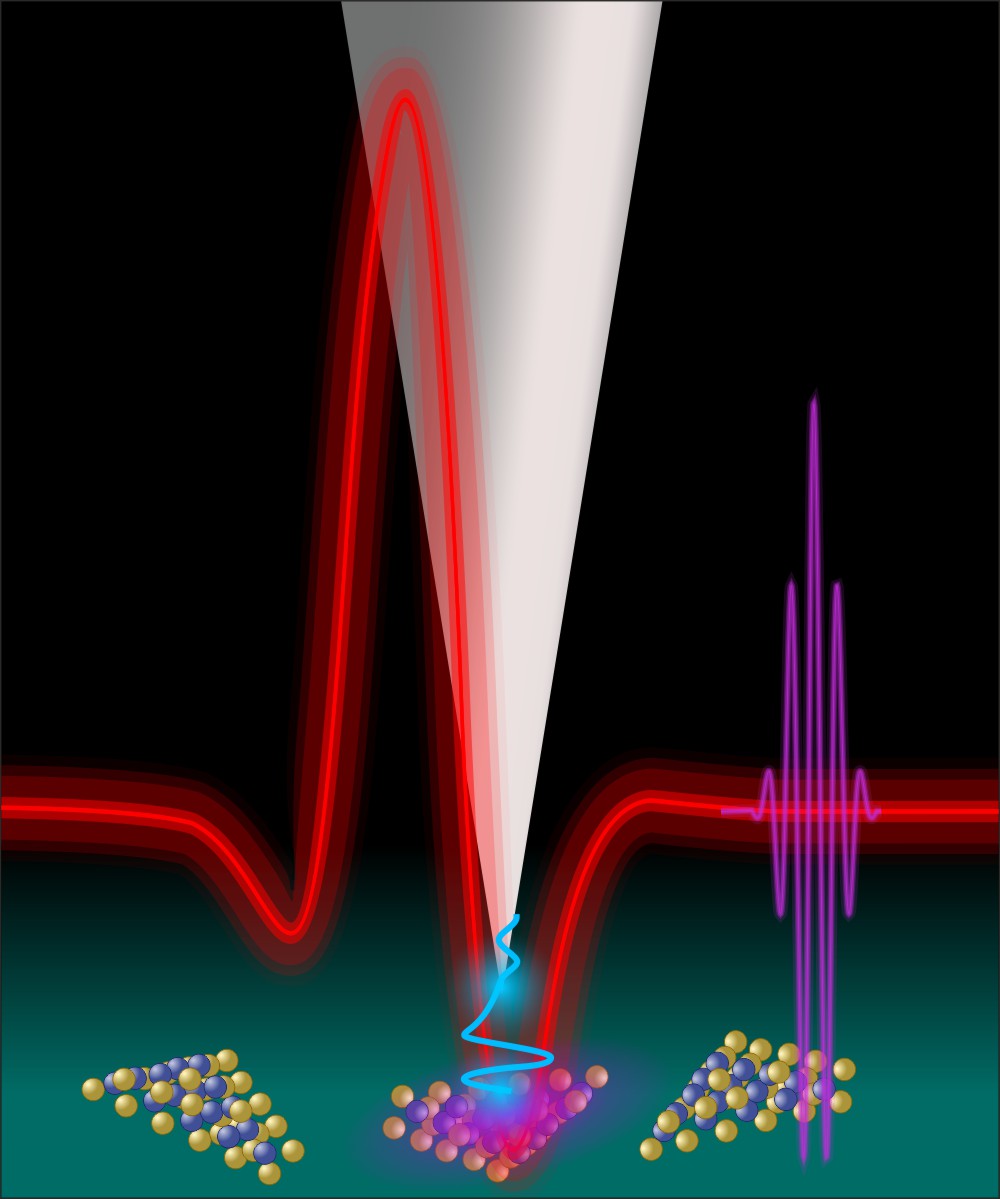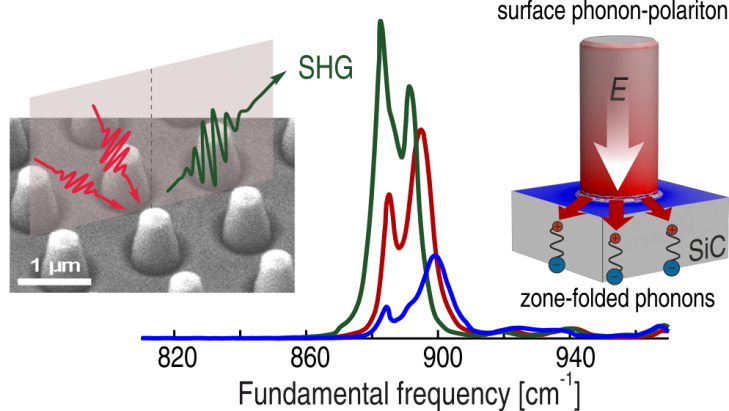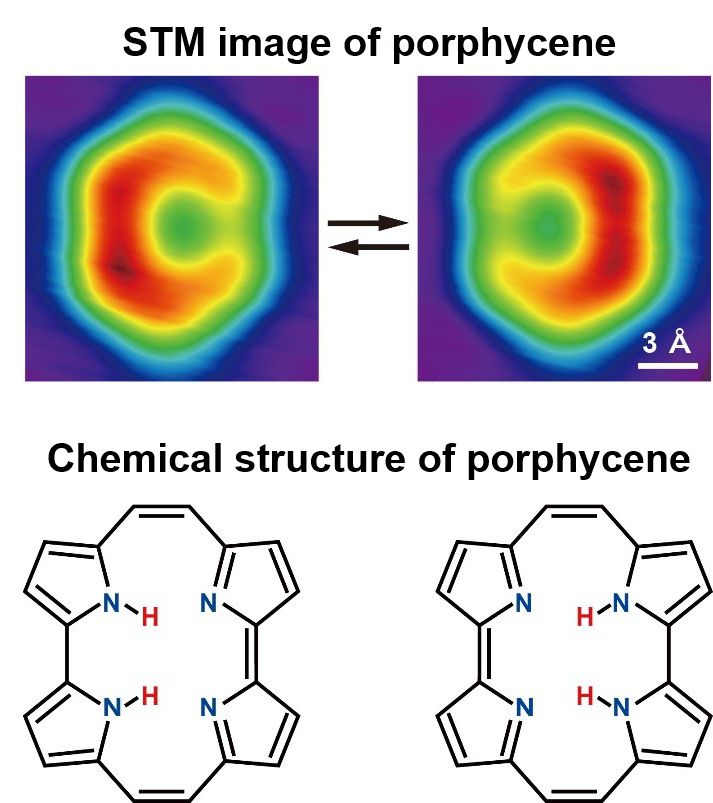
Molecular processes at interfaces and in condensed phase systems including gas-solid, liquid-solid as well as electrochemical interfaces and liquids: Here scanning probe micro- scopy – in part combined with optical excitation or light scattering – is used for imaging, manipulation and spectroscopy as well as inducing and probing chemical processes of indivi- dual molecules. Furthermore, nonlinear optical sum-frequency and high field THz spectro- scopy provides insights into the molecular structure at interfaces and into the dynamics of liquids. In particular, with these activities we implement the new direction of the FHI for the evolution of the institute into the next decade towards atomistic studies of processes at complex interfaces (i.e. beyond gas-solid in UHV) including liquid-solid, liquid-gas and electrochemical interfaces.
Confinement of light to nanoscale dimensions provides the unique opportunity to increase light-matter interaction for various application, such as chemical sensing, super-resolution imaging, or miniaturized photonic circuitry. In the infrared spectral range, this can be achieved by employing lattice vibrations in polar dielectric crystals – optical phonons – to form phonon-polaritons, which allow tight spatial confinement due to their large momenta.
The Lattice Dynamics group develops new infrared nanophotonic concepts and experimental methods to probe the properties of phonon polaritons confined to surfaces, in heterostructures, and in nanostructures. Specifically, we use Otto-type prism coupling, second harmonic and sum-frequency generation spectroscopy, as well as sum-frequency generation microscopy, providing a comprehensive understanding of the polaritonics systems. Enabling these experiments, the group employs the widely tunable FHI free-electron laser (FEL) as a uniquely powerful infrared light source. These experimental capabilities are complemented by theoretical spectroscopy toolbox, that not only allows theoretical description of the experimental results but also enables predictive studies of yet unexplored polariton physics in new materials and nanostructures.
A deep understanding of electrochemical processes generally requires a combination of electrochemical and spectroscopic methods. While electrochemical analysis can provide the potential, current and charge information, the spectroscopies can reveal the electronic and vibrational properties of the reaction intermediates or products. The combination is referred to as spectro-electrochemistry.
Among the modern spectro-electrochemical techniques, vibrational spectroscopy such as Infrared absorption and Raman scattering are powerful in terms of providing structural and chemical information of interfacial species and have thus been widely employed for in situ spectro-electrochemical characterization. However, IR and Raman spectroscopies are not surface specific. When the surface and the bulk have similar chemical compositions, i.e. bulk solvents and anions adsorb to the electrode surface, it is very challenging to selectively probe the adsorbed species and discriminate from those of the bulk. Vibrational sum frequency spectroscopy (VSFS), based on the 2nd order nonlinear optical process, is intrinsically surface specific hence an excellent tool in probing buried interfaces.
Hydrogen dynamics is related to many important physical, chemical, and biological processes. Tautomerization in organic molecules is an intriguing model system for investigating hydrogen dynamics. We have addressed real-space study of single-molecule tautomerization using state-of-the-art low-temperature scanning probe microscopy, which is now an emerging topic in the field and provides a unique opportunity to directly visualize hydrogen dynamics [1]. Porphycene, a structural isomer of porphine, exhibits particularly interesting tautomerization dynamics due to the strong intramolecular hydrogen bonds, resulting in the low tautomerization barrier and strong anharmoncity in the potential energy surface, whereby nuclear quantum mechanical effects of hydrogen play a crucial role [2]. We have demonstrated direct observation and control of single-molecule tautomerization in porphycene adsorbed on metal surfaces, induced by various external stimuli, namely heat [3], electron [4], light [5], and force [6] as well as occurring by quantum tunneling [7]. We further showed that the tautomerization can be precisely controlled by a local environment on the atomic level [8]. Our approach provides novel microscopic insights into hydrogen dynamics in heterogeneous systems, which serves as a basis for ab initio quantum mechanical simulations and for potential applications for single-molecule switch.


